Don’t miss this first trailer for Tom & Jerry:
The VFX are made by:
Framestore
Unit VFX
The Production VFX Supervisor is Frazer Churchill.
Director: Tim Story
Release Date: February 26, 2021 (USA)
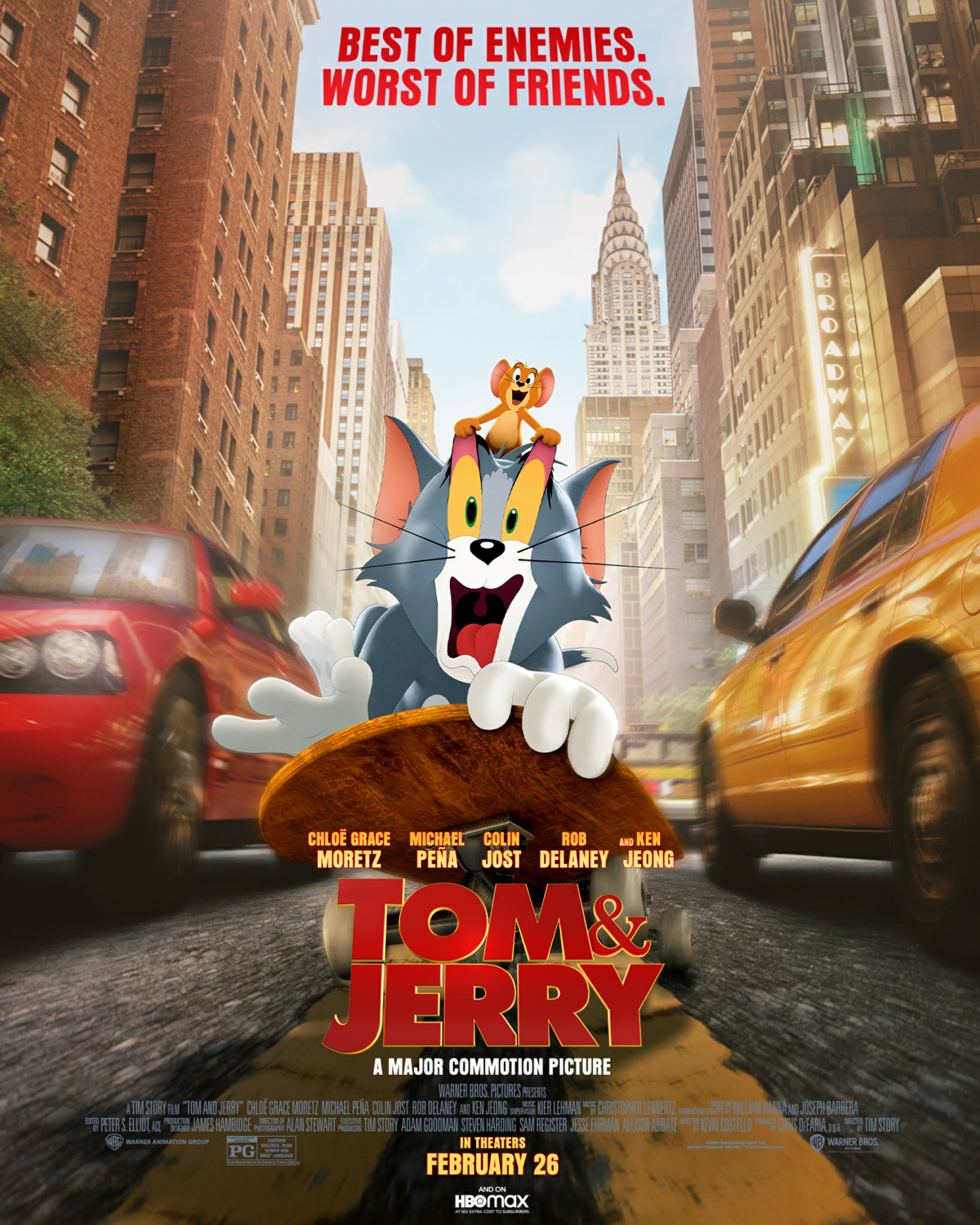

© Vincent Frei – The Art of VFX – 2020
Don’t miss this first trailer for Tom & Jerry:
The VFX are made by:
Framestore
Unit VFX
The Production VFX Supervisor is Frazer Churchill.
Director: Tim Story
Release Date: February 26, 2021 (USA)


© Vincent Frei – The Art of VFX – 2020
Come have a look at the creation of the massive tornado created by the teams of Zoic Studios for the fourth season of FARGO:
© Vincent Frei – The Art of VFX – 2020
Don’t miss this promo video for the Stephen King adaptation of The Stand:
The VFX and Previz are made by:
Industrial Light & Magic
Important Looking Pirates
SPIN VFX
Pixomondo
Folks
Phosphene
Cinesite
Zoic Studios
Studio 8
Territory Studio
The Third Floor
Proof Inc
Exceptional Minds
Wylie VFX
The Production VFX Supervisor, Second Unit Director & Producer is Jake Braver.
Creators: Josh Boone & Benjamin Cavell
Release Date: December 17, 2020 (CBS All Access)

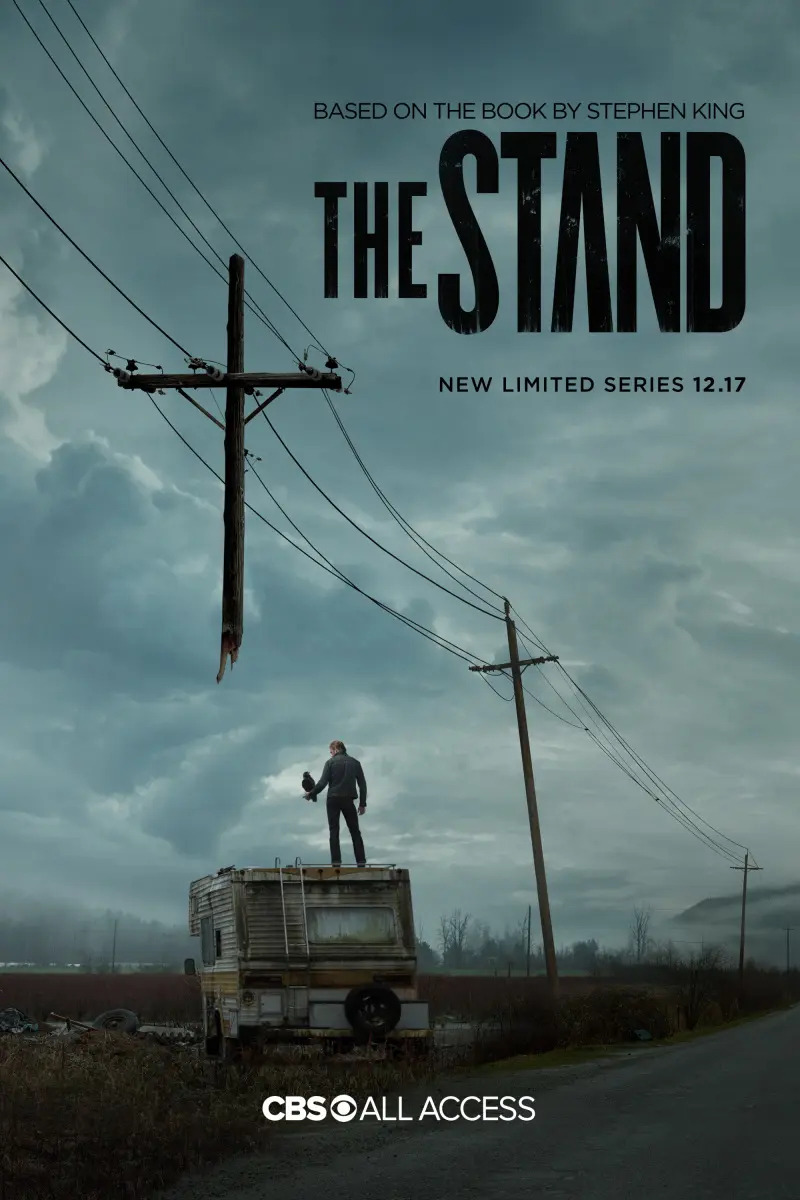

© Vincent Frei – The Art of VFX – 2020
Ivor Middleton has been working in visual effects for over 26 years. He has worked in many studios such as Mill Film, Cinesite and Vine FX. In 2012, he created his own studio IMG VFX. His filmography includes many projects such as GLADIATOR, THE GOLDEN COMPASS, THE RACK PACK and THE WAR OF THE WORLDS.
What is your background?
I’ve worked is VFX as an artist and supervisor for 26 years. I started in the industry working in commercials in the early 90’s, before working for some of the larger companies such as Mill Film and Cinesite working on features. I set up IMG VFX eight years ago, and we provide VFX supervision service to productions, as well as operating as a vendor creating cgi, animation, FX and compositing.
How did you get involved on this show?
The production needed help VFX supervising the shoot, and I got involved in the preproduction phase of the show. Once we wrapped the shoot I continued working with production as overall VFX supervisor during post, liaising with our vendors and production.
How was the collaboration with the Showrunners and the Directors Philippa Lowthorpe and Marc Munden?
It was a really creative process and a very demanding show. Both directors, producers and creators had very high ambitions for the series with was really trying to break new ground. One of the interesting and creative aspects of the show was how much we needed to design for the VFX- so there was a stage where we did a lot of concept work to establish where we were taking the VFX.
What was their expectations and approach about the visual effects?
The expectations were very high, and we had the whole gamut of VFX on the show, from creature animation, environments, FX. Some of the most challenging sequences were the dream sequence in Episode 1 and Episode 2, and the acid trip sequence in Episode 2 and 3, where we really had to explore what the imagery needed to be. However, even some of the so called simpler VFX of subtly changing the environment needed a great deal of attention to make sure it fitted with the tone of the show- the directors were very driven to get the work right. One of the most important things to get right was to get the VFX to blend in- it’s not really a VFX show, despite there being 520 VFX shots, and we never wanted to forefront the VFX above the narrative.

How did you organize the work with your VFX Producer?
Rob Delicata was the VFX Producer, and although we’ve known each other for years, this is the first time we had actually worked together. Rob was very keen on us having multiple vendors to ensure everything could be delivered in the timeframe. This made sense as we both knew this was a much bigger project than originally anticipated with more complex VFX requirements. The schedule was quite tight and we had a broad range of work so in the end we had five vendors, as well as Online, MPC Episodic, Freefolk, Lenscare FX, Union VFX, and my company IMG. This approach stood us in good stead when we went into lock down with Covid in March – and everything went remote.


Can you elaborates about the environment work of the mysterious island?
There was quite a lot of this work. We often needed to make the island feel more isolated, so we needed to change the horizons and skies. The causeway is very significant in the story and quite symbolic, and we had these great top shots which were quite stylised- these were entirely cgi. One of the problems we had shooting on the causeways is the water levels change so rapidly- so there were sequences where we created cgi water to get the levels as they needed to be for the narrative- and this to play seamlessly with wonderful photography.
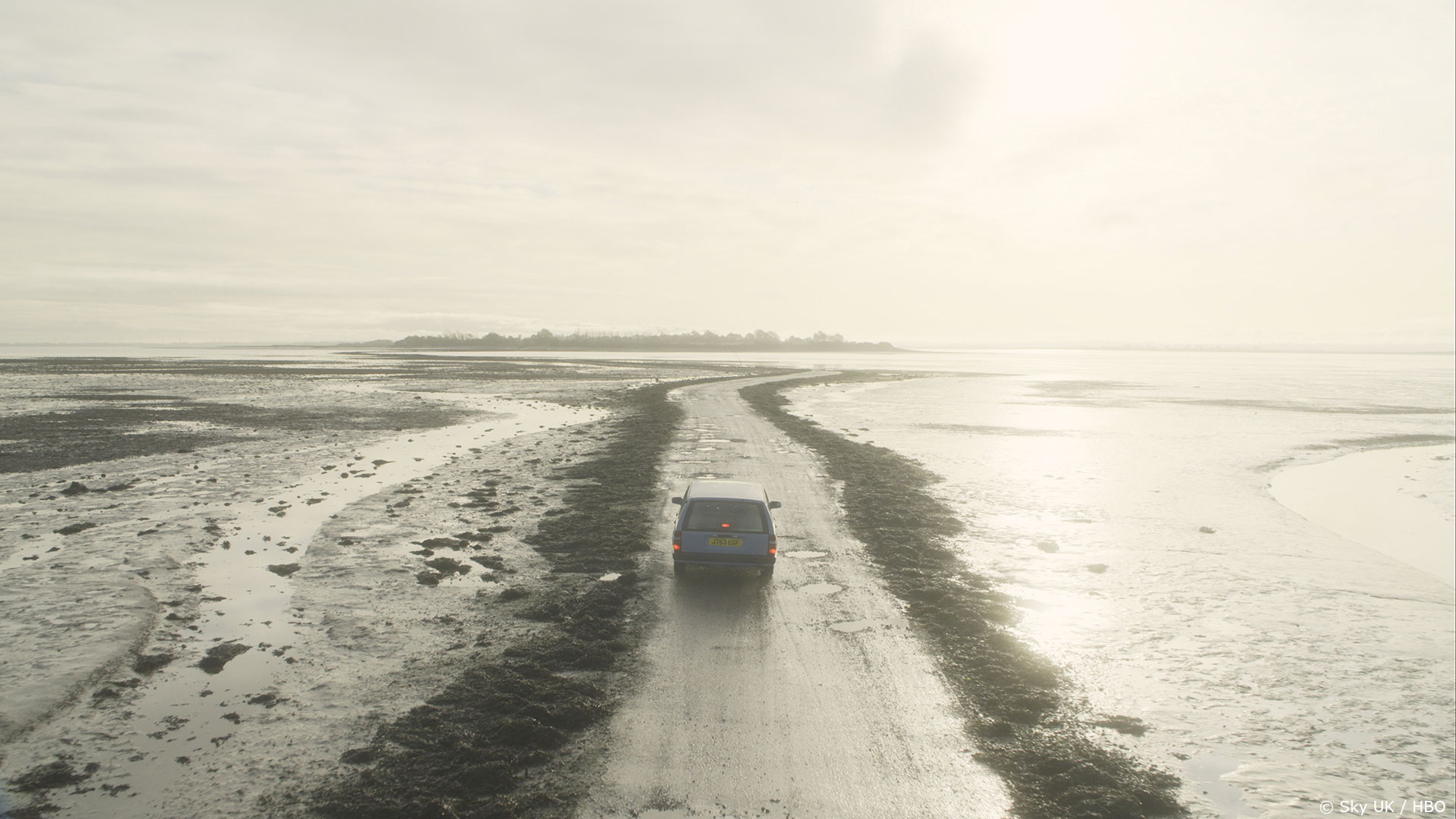

Which place was the most complicate to extend?
Definitely the acid sequence in Episode 2- we developed all this wacky imagery, base around the mythology of the story, which needed to emerge from the environment.
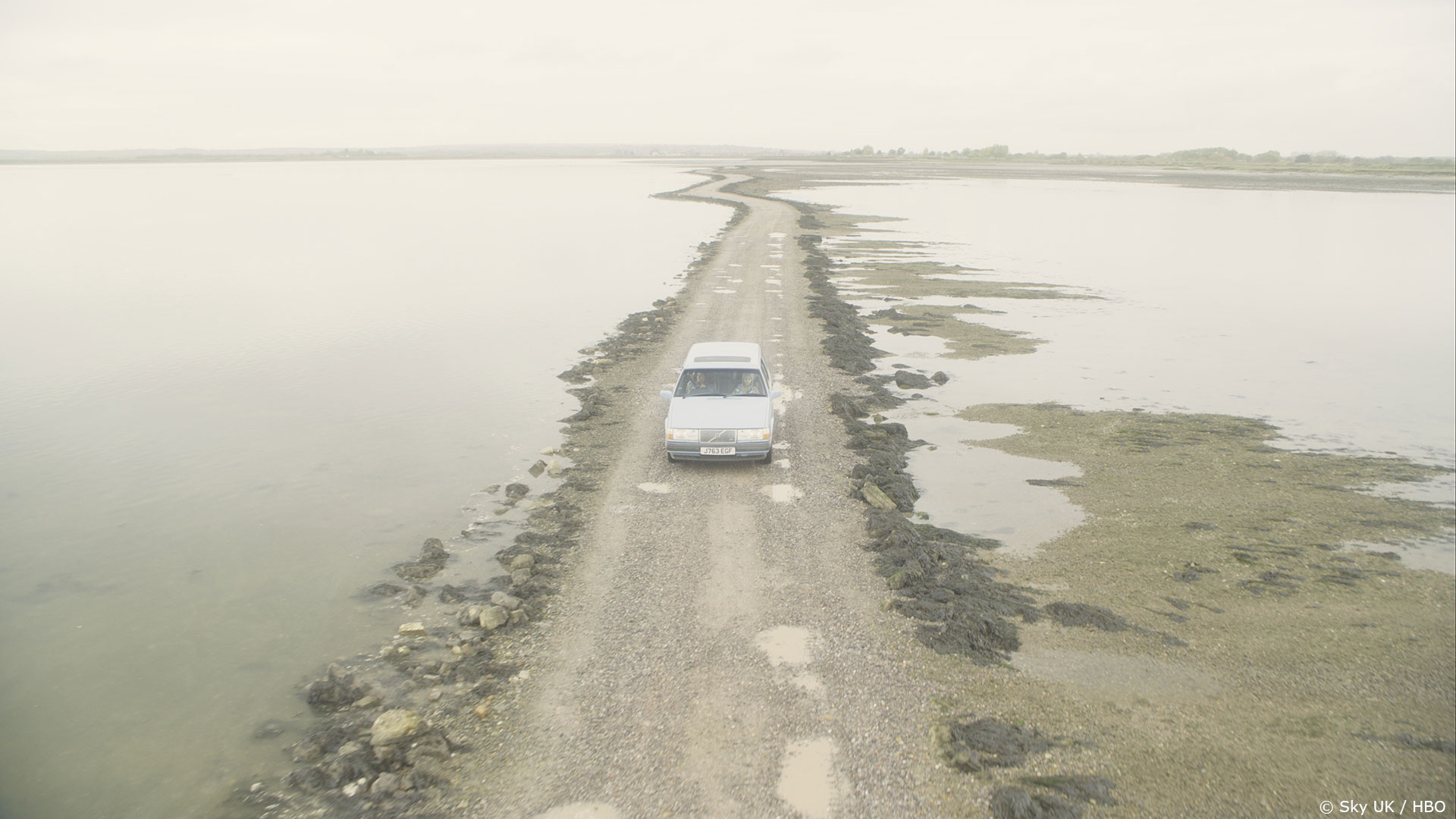

Where was filmed the island sequences?
Quite a lot was filmed on Osea island, which is real island of the same name, with a causeway, in the Blackwater Channel in Essex. However we film on a lot of other coastal locations on the mainland, some quite wild places like the Isle of Grain and Sheppey. But we also shot inland in various woods, and big country house which give the island a sense of scale.


Can you explain in detail about the beautiful aerial shots in which we see the road and the sea?
Ah yes, I mentioned those earlier. There were a number of drone shots which were filmed- and what was magical about those was you could see the causeway beneath the sea- so that was an idea that was developed further with these big aerial shots- which were created in cgi. We get this sense of the serpentine form connecting to the mainland- but you can see the causeway and underlying basin. They are quite stylise- the scale of the water is bigger than it should be and the colorist added a lot to the shots in the grade.

Those shots looks like paintings. What kind of references and indications did you received for them?
We didn’t have any reference, apart from the original drone footage, and they just kind of evolved to be these quite beautiful painterly images which we see.

Can you tell us more about the water simulations?
The water simulations were done in Houdini.

Can you elaborates about your creatures work?
Yes, there was quite a lot of creature work- crickets, crabs and these were done across multiple vendors including MPC Episodic, IMG, FreeFolk and Union.
The crickets are a recurring motif throughout the ‘Summer’ Episodes, and which also appear on the various bits of artwork we see in the festival rehearsal scenes, and also as wooden sculptures peppered around the island. We learn that the crickets portend rain but also death- so they have an increasingly ominous presence.
We first come across a cricket, when we first meet Sam, when he is grieving beside the stream. The intention was that they should be abnormally large and exotic looking- vibrantly colourful, and therefore clearly out of place. Modeled and animated in maya, and rendered in Arnold.
We next come across a cricket as Sam approaches the causeway. This time Sam kicks the cricket over, only to find that it is dead as a lot of tiny bugs spill and crawl out of its abdomen, eliciting a sense of disgust in Sam. It also presages a theme of disembowelment and violence, relating to the islanders beliefs, which we come across again repeatedly in the narrative.
All of this culminates in a huge shot at the end of the ‘Summer’ Episodes- the final shot of Episode 3. As Sam enters the Big House, a huge swarm of ‘crickets’ take to the sky and amass above the house. One of the biggest shots we undertook, and also one of the longest. A great deal of attention was given to the animation, so that at first we are not aware of them, but one by one they start to move and then fly. Crickets can’t fly of course- so they have become locusts- with all the biblical associations which come with a swarm of locusts.
The crabs make an appearance where Sam wakes on the beach surrounded by them. The point here was it denotes that the tide is out, and therefore the causeway is open. But also it gives a sense of the island is somehow alive- a recurring theme- the sense that the island is somehow responding to Sam’s presence. There are other similar shots, filmed in camera, for example the ants in the woods during the acid sequence. Shots created by MPC Episodic using their crowd system.

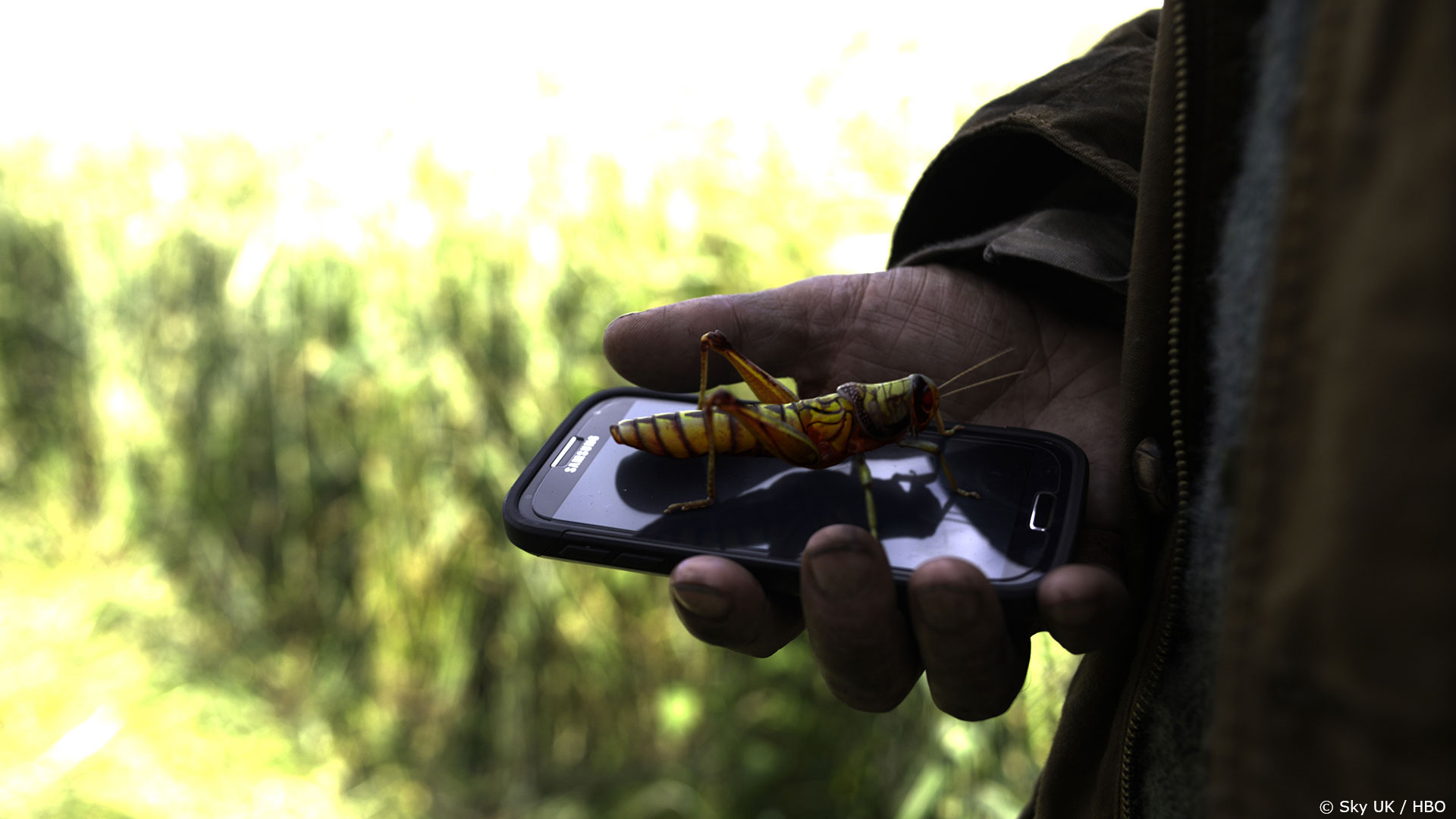
How did you handle their rigging and animations?
Maya and Houdini.
Some shots have many creatures. How did you handle their crowd animations?
The crowd shots- the crabs and locust swarm at the end of Episode 3 were created by MPC Episodic.
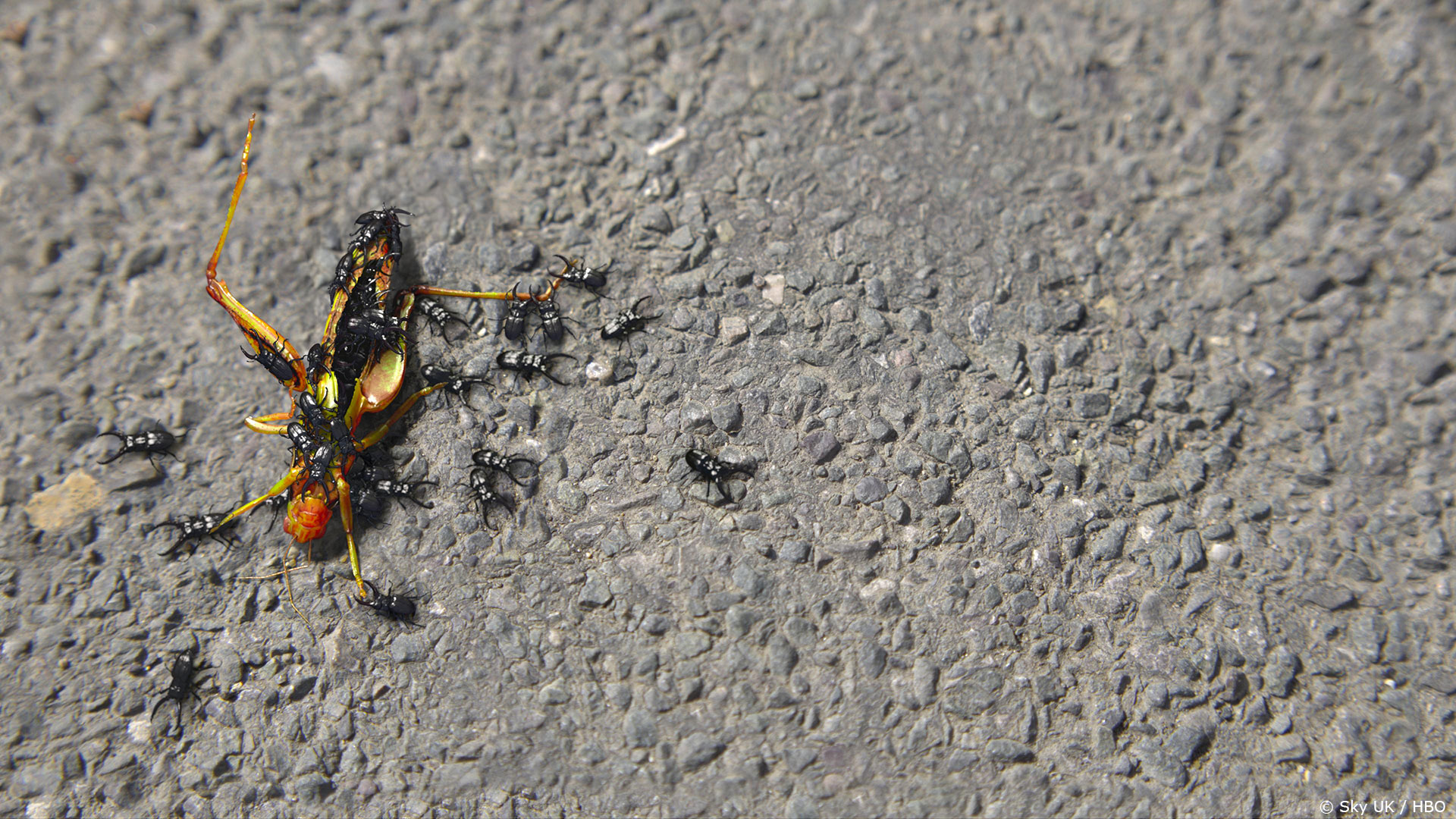
During the festival, the heroes have strange visions. How did you design and create those shots?
Yes, Sam is having an acid trip, and this was one of the most demanding aspects of the show, and was spread across multiple vendors. This was both a technical challenge, but also a big creative one. While some of VFX was scripted, not all of them were so there was quite a lot of creative and concept development with the director Marc Munden.
While there were a lot of ambitious VFX shots across this sequence, they very much fit with the narrative and the tone of the film. Acid trip- great visuals- yes- but they refer to the mythology of the island, and reinforce the sense, which runs through the narrative, that the boundary between what is real and what is imagined is unstable.
The starting point was the script and what’s happening in the narrative. One of the interesting things about the filming of the ‘Summer’ Episodes is that we are always on Sam, in his environment, or sharing his POV.

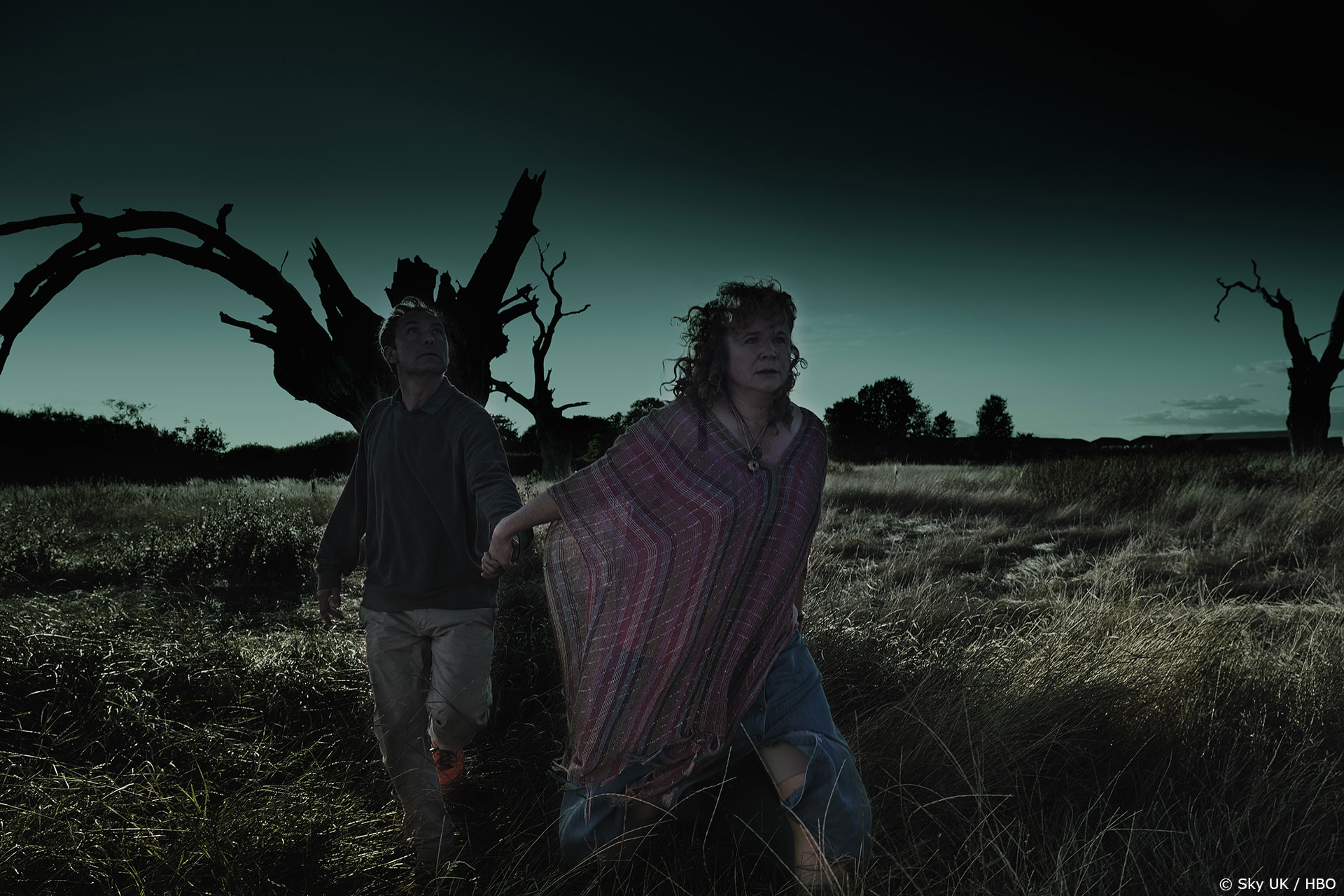
So our understanding of events is defined by Sam’s subjective experience. As Sam starts to revisit the trauma and loss he has experienced, and buried in his past, triggered by events on the island, the febrile environment he finds himself in and the mysterious rituals, visions, internecine feuds, his reliability, his understanding of reality becomes increasingly questionable. This also plays out in how the film was shot- often close up with a distorting wide lens and shallow depth of field, and in the edit- we have flashbacks, but also flashforwards- and shots are strung together in a disorientating way.
It was within this context that we set about concepting the ideas for the acid sequence. The key bit of reference as a starting point was google deep dream.What was liked here was the continuously evolving forms and half forms. But the intention was not to just apply this as an effect- which would have been rather a hackneyed approach, but rather use it as an inspiration. It was a good starting point though. What google deep dream does is analyse an image and if it sees a pattern that resembles an image it makes it more like that image. Pattern recognition in reverse. So this resembles in some ways what is happening in an acid trip where the brain’s interpretation of the environment is disrupted and is resolved by projecting internal imagery.
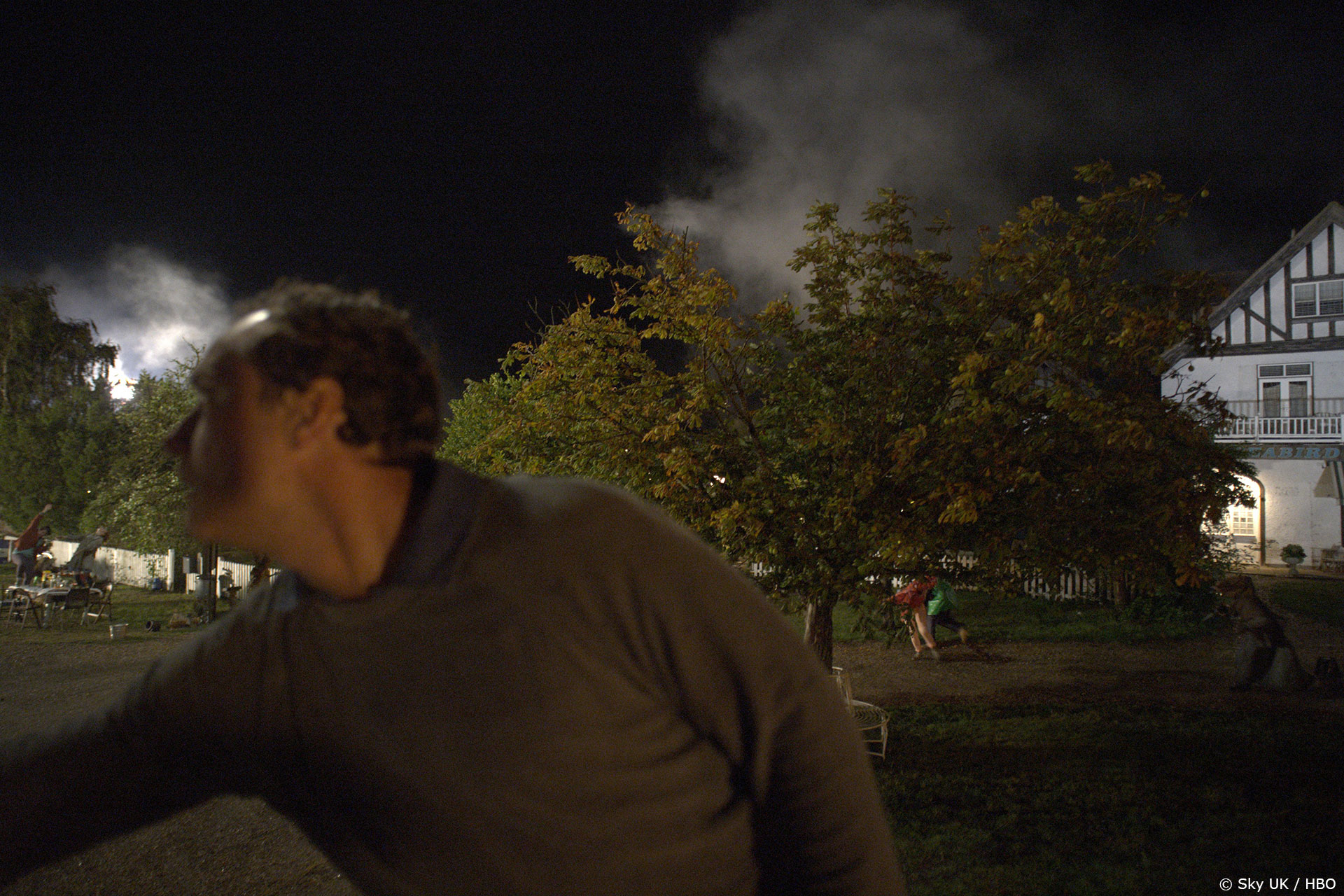
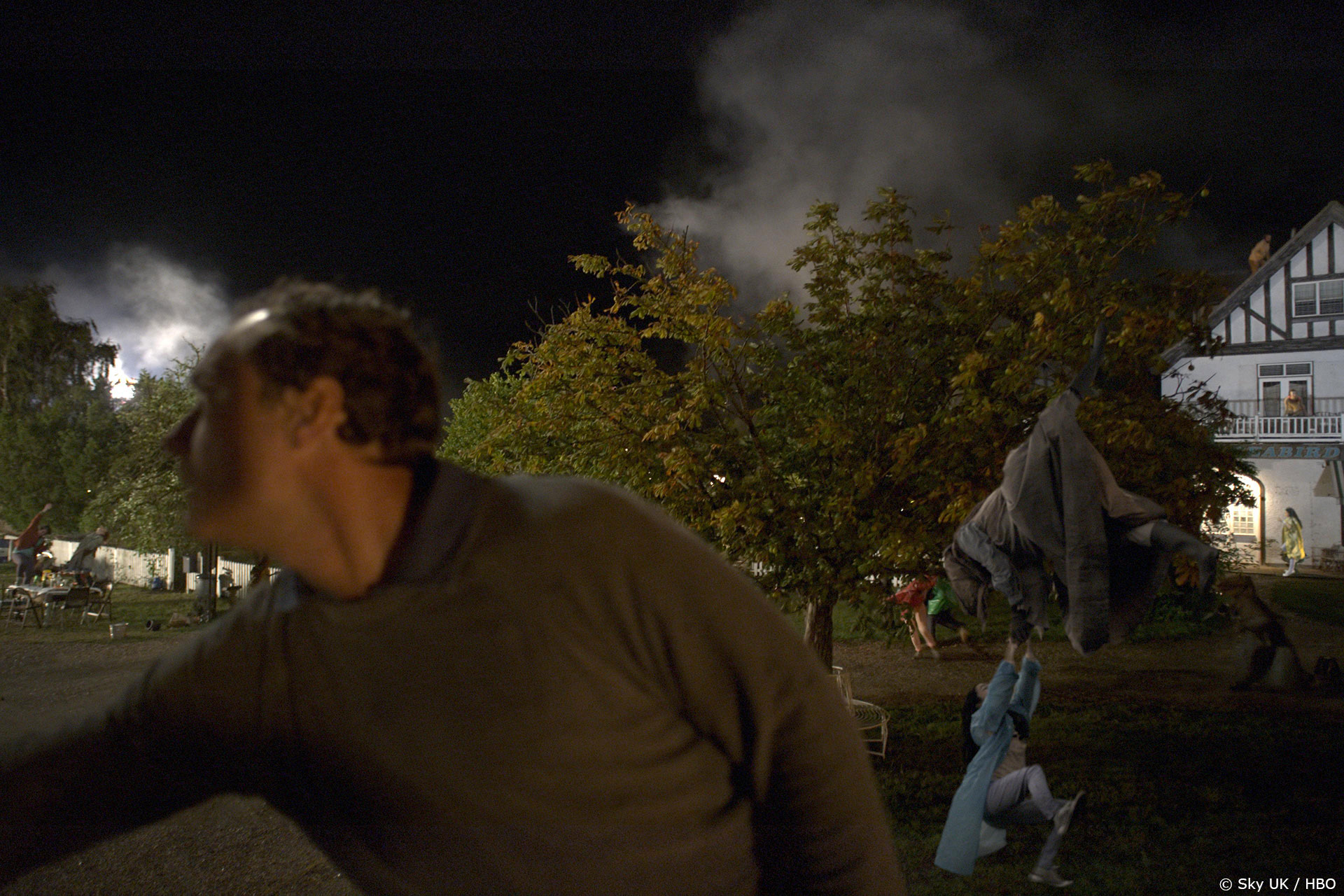
Came up with this idea of an evolving encrusted landscape, populated with imagery that is built up in the narrative. For example the scene of Sam and Jess in the woods. Bit of a love scene really, the idea here was to give a marine feel- and the trees evolve into these coral like encrusted forms. When we are at the chapel, the trees become masks- the Sejora masks we see throughout the film- as the narrative unfolds the acid trip becomes more ominous.
One the features of the ‘Summer’ Episode is the heavy grade that was applied, and the other complexity of these shots, and others in the show, was that they were shot day for night. But the intention was not to just give a tungsten grade, a blue wash. The director was aiming for a kind of Jack Cardiff, Powell Pressberger look- The Red Shoes. So we had the daylight color information for the landscape, which was then heavily graded but then took the skies very dark. So we end up with something that is slightly ambiguous- neither quite day nor quite night- and something quite magical.
In the script the masks, which our drunken, tripping villagers are wearing, were to animate and come to life. This changed. One really great shot is where we jump cut to Mrs Martin wearing a prosthetic mask of her own face. Just clean up really- rather an eerie feel.
This led us to change the masks of the villages around the campfire in a similar fashion. The idea was to make the mask look more like real faces, but not quite- so that there is something rather odd about them. Case of tracking cgi sculpts onto the masked characters.

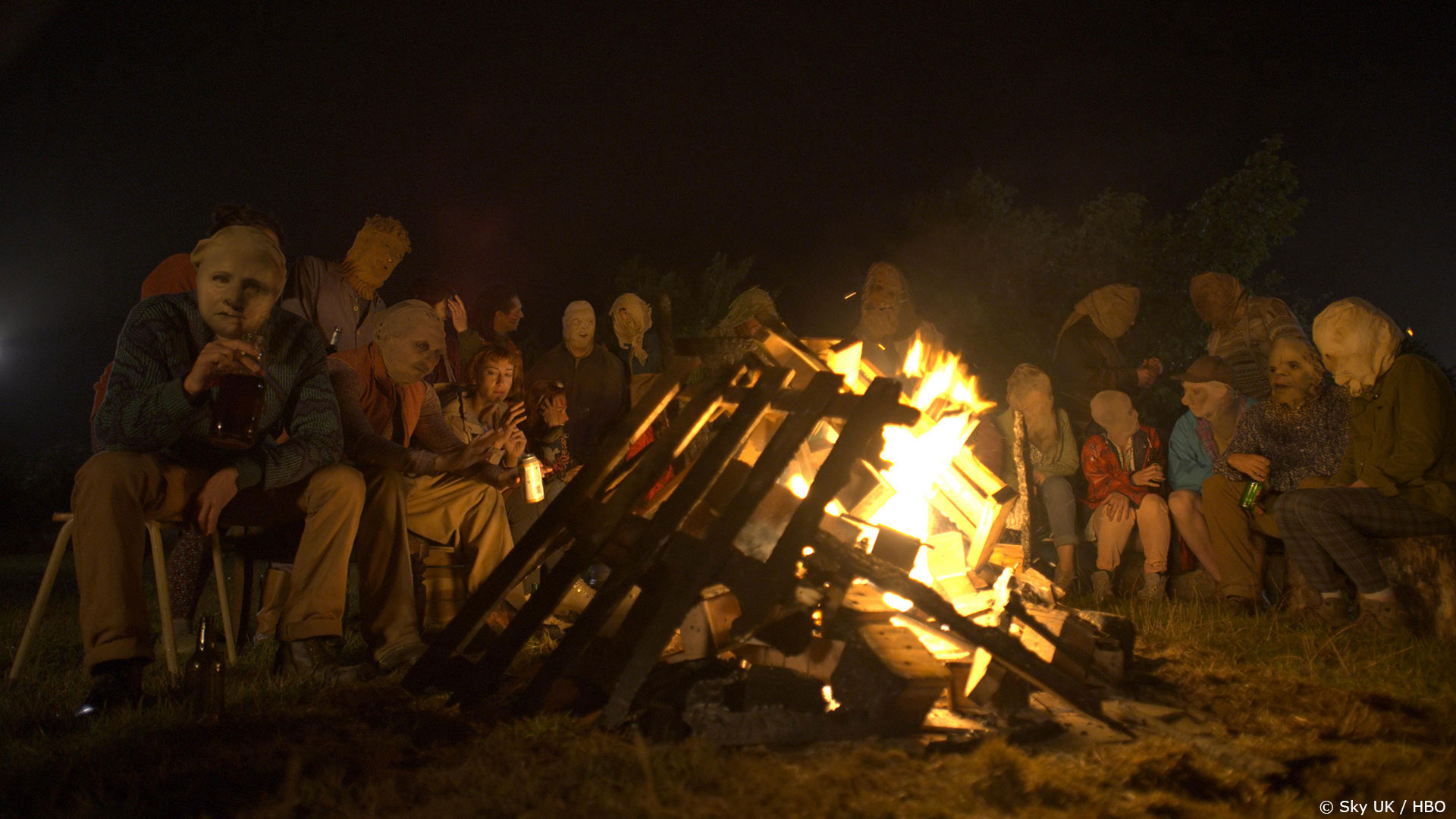
Can you tell us more about the trees creation and animations?
Yes- as Mrs Martin leads Sam away from the partying, we pass through the petrified woods, which was another opportunity to apply our acid treatment to the environment. It was a fantastic location with all these dead trees, and given their twisted forms it was an ideal to develop them into these quite abstract insect like forms, all evolving and coming to life. It was quite simple really- it was designing it that was the difficulty- as with a lot of these shots.
During a shocking sequence, Jude Law has its skin starting to burn. How did you create it?
We went through an extensive concept and development stage. While seemingly so simple- the script just says ‘his skin starts to BLISTER in the heat’, this shot proved a big challenge creatively. We had a scan of Jude Law, and built a procedural approach to show the skin progressively lifting from Sam’s face across the shots.
However, establishing the look of the blistering was tricky. The idea was that it’s not really happening, it’s in Sam’s mind, and the Director didn’t want it to be about injury or disfigurement, or horror. And of course we were applying this to the lead, Jude Law, and it’s very in your face- whenever you start doing something to an actor’s face in VFX your courting trouble.
Added to that it had to look photoreal, but it’s clearly impossible, immediately flagging it up as an obvious VFX- and it’s the first time in the show that you clearly see something that is VFX- so worried about that.
In the end we struck a balance of something readable, but subtle enough that you could feasibly have filmed something. And we also muddied up the plate and comped flames and heat haze over the top.
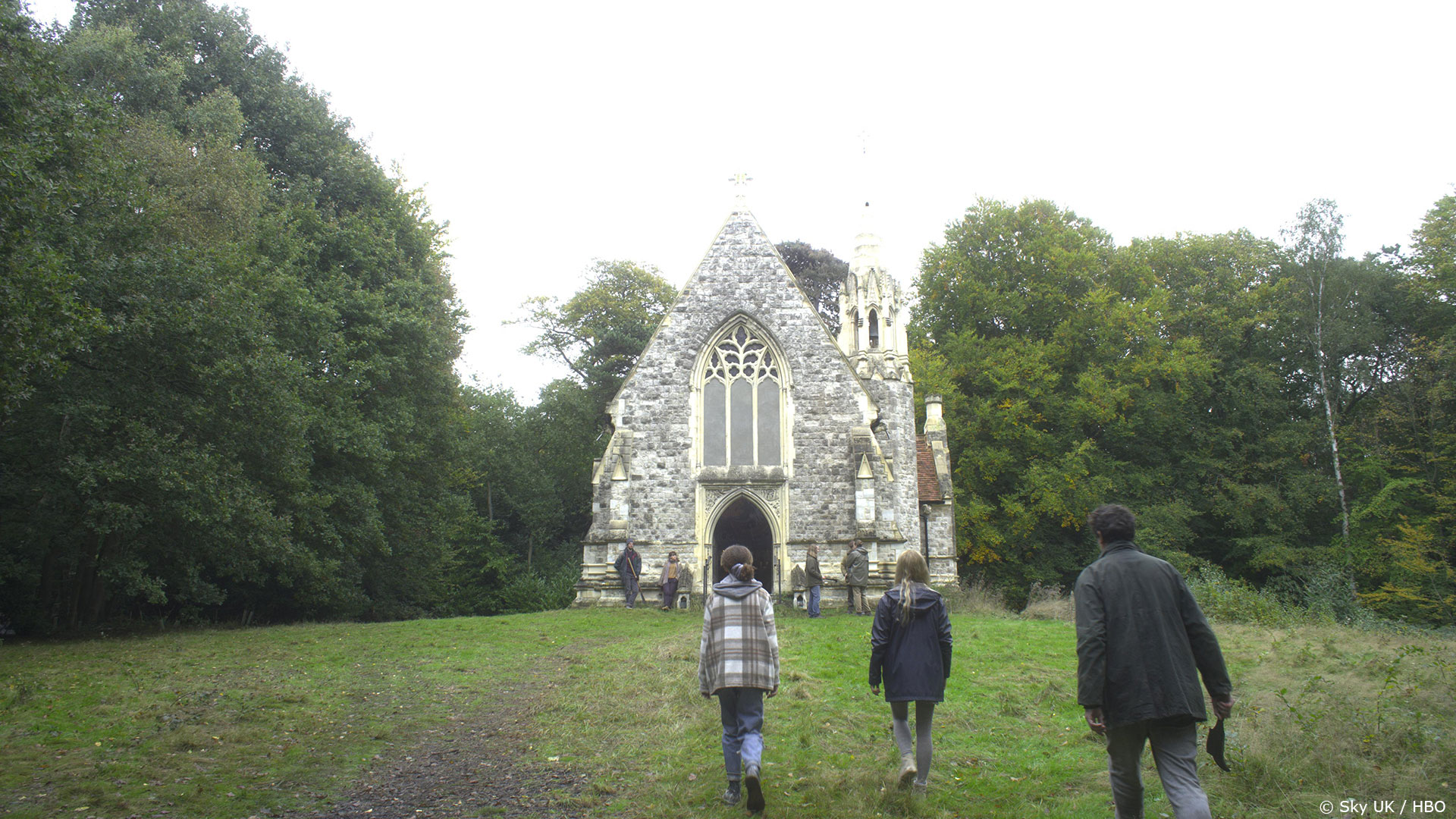

The series is full of shocking and gory shots. Can you tell us more about them?
Yep- there’s an underlying theme of violence in the narrative. This relates in part to the beliefs of the islanders and their actions. There is also this constant mention of the ‘Darkness’ or the ‘Darkness is coming’- I think this can be interpreted as a number of things. But it’s something within Sam for sure, to do with his grief and resultant feelings of rage, and it manifests itself in a number of ways, sometimes violently, and there is a sense that he could be implicated in something. What brings him to the island in the first place is the very violent attempted suicide by hanging of Epona and he dreams these incredibly violent, blood soaked visions.
A lot of all this was filmed in camera, but not all. We have a moment when the tripping Sam, hallucinates that he has been disembowel. One of the more difficult shots we had to do. We couldn’t really get this in camera- it was always going to be one long shot with no cuts, and we needed it to appear with the blood soaking through Sam’s sweatshirt and then disappear. A lot of body tracking, and interaction between Sam and the wound. We also needed to find away to get it to close, and the blood to clear off without looking like it’s just a fade- so timing it to Sam’s action was quite important.

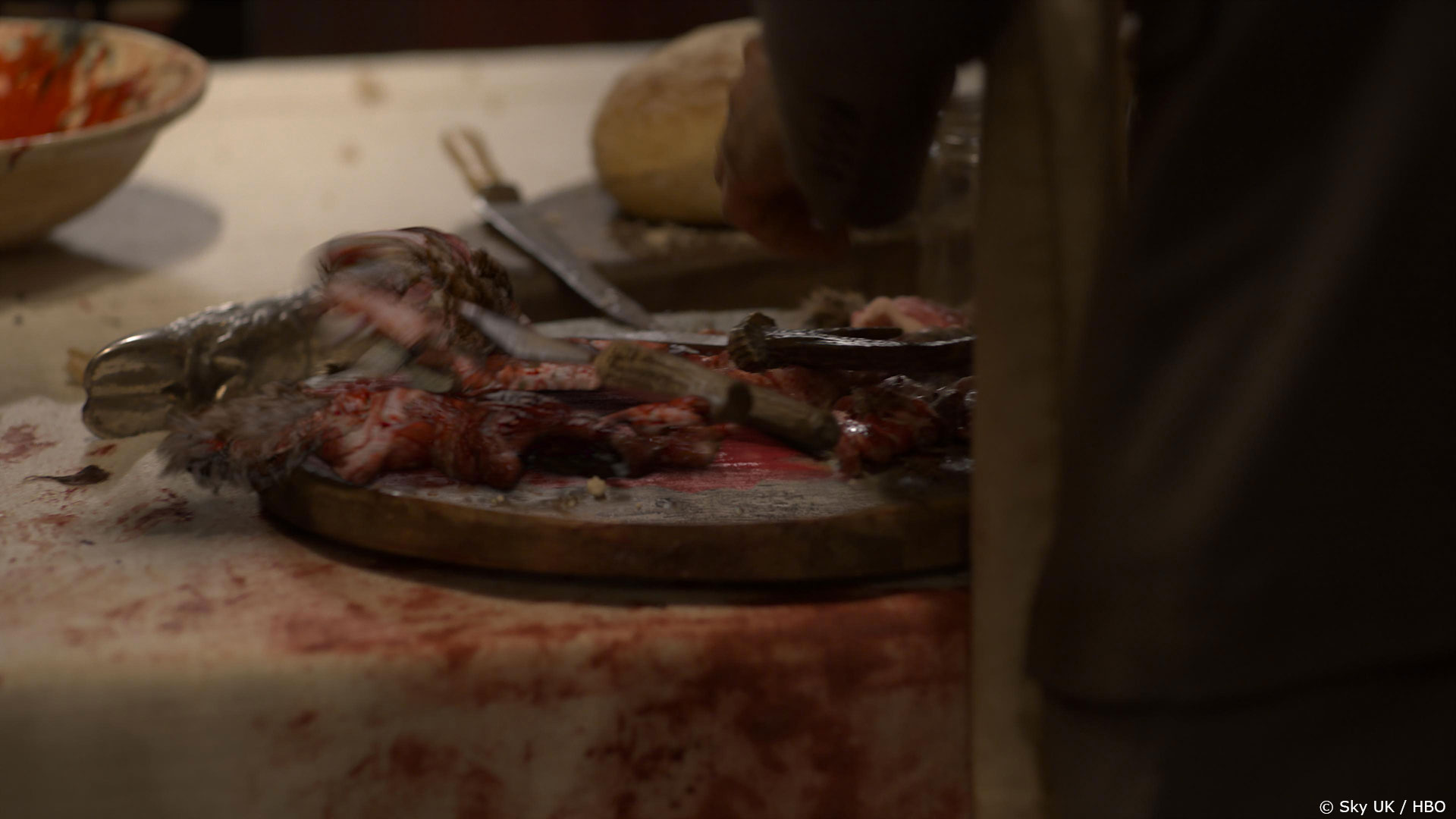
Which sequence or shot was the most challenging?
Oh- definitely the acid sequence which spanned Episode 2 and 3.
Episode 2 ‘The Son’, goes pretty crazy. Episode 3 ‘The Ghost’ takes us somewhere really quite mental. And that’s certainly true of the acid trip sequence, where Sam, who’s still tripping hard, finds himself in this blood red room being subjected to some kind of Pagan/Christian ritual. It’s very dark, violent, and disturbing. Filmed in the basement of St Cleres. This big country house. All filmed on a very wide lens- very distortive. Again some of it was scripted, but we also went through the edit with the director and came up with ideas/visuals we thought we could add, which we then designed and concepted.
The cricket makes an appearance again- this time appearing to feed off a wound on Larry’s head, which mirrors the same wound on Sam’s. In the script The Preacher’s face is not entirely stable- however as we were so wide on the lens, there was a lot of distortion anyway. So just a bit of 2d distortion going on.
From Sam’s POV, we can see a plush room. Actually a comp of a different room. Where we variously see either nobody, or the Girls, or the Girls with the Father, sitting impassively, ignoring the proceedings. Creepy as anything.
In the script- Preacher rips a hunk of bread. Seems to be bleeding. The bread pulses like a heart. Tried to shoot but became VFX. We changed this to become a beating bloodied liver like organ. Fairly disgusting.
We thought we could add to the red walls of the Ritual Room, and Sam’s surrounding environment. We took this all in quite a bloody direction. The scene opens in darkness, the sack being on Sam’s head, and we see these nebulous form jump out at us. We also transformed the walls to feel like we are in some kind of body organ- so we have these pulsation meat walls.We added this kind of struggling necrotized, nascent form, perhaps a face, writhing behind Sam.
One opportunity we couldn’t miss was bringing to life meat on the Preacher’s table- some torn up animal that’s been ripped apart. It sort of crawls across the plate. All quite Jan Svankmajer- as are the growing chair legs that become cricket legs rattling away in the corner.
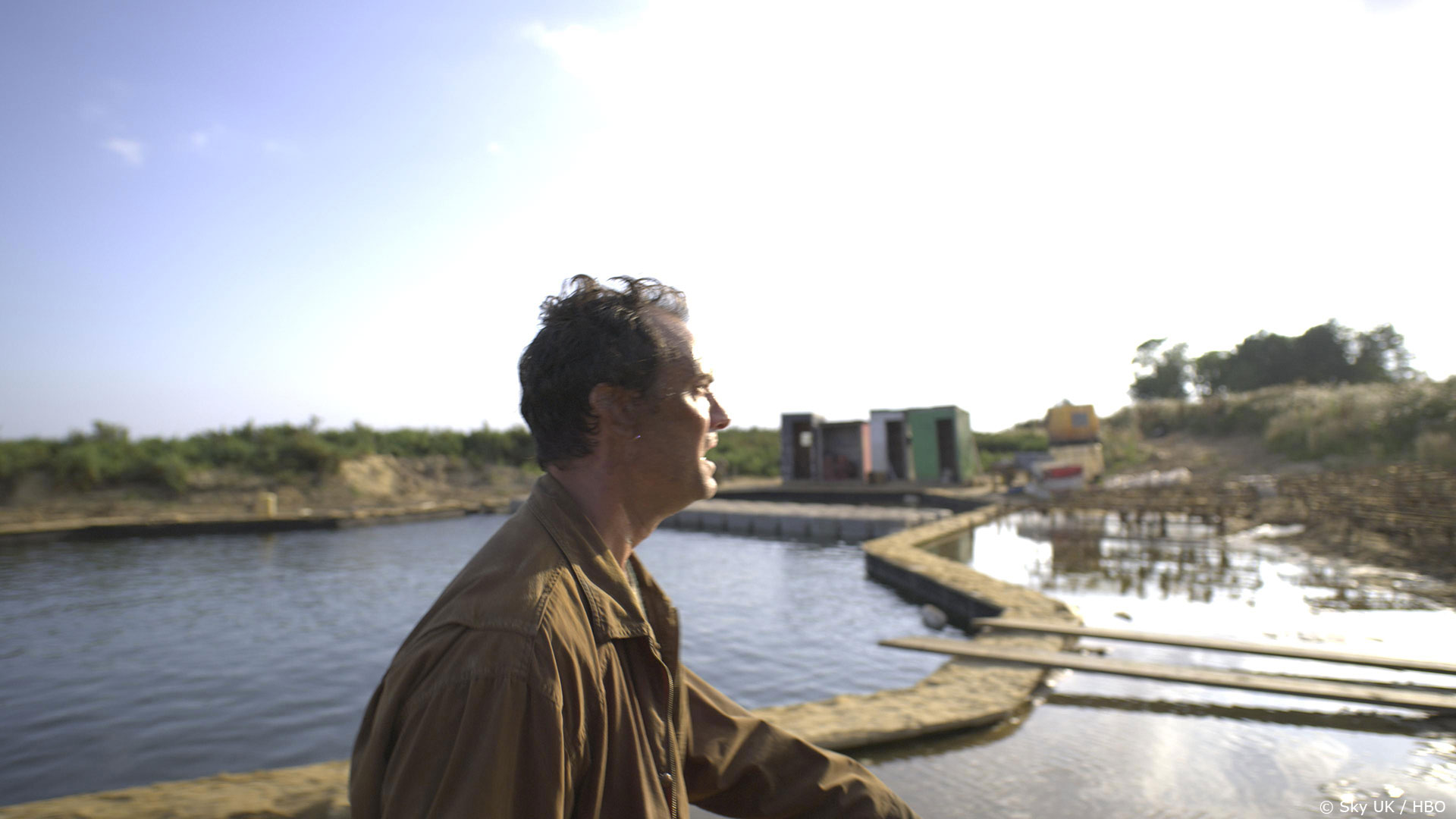
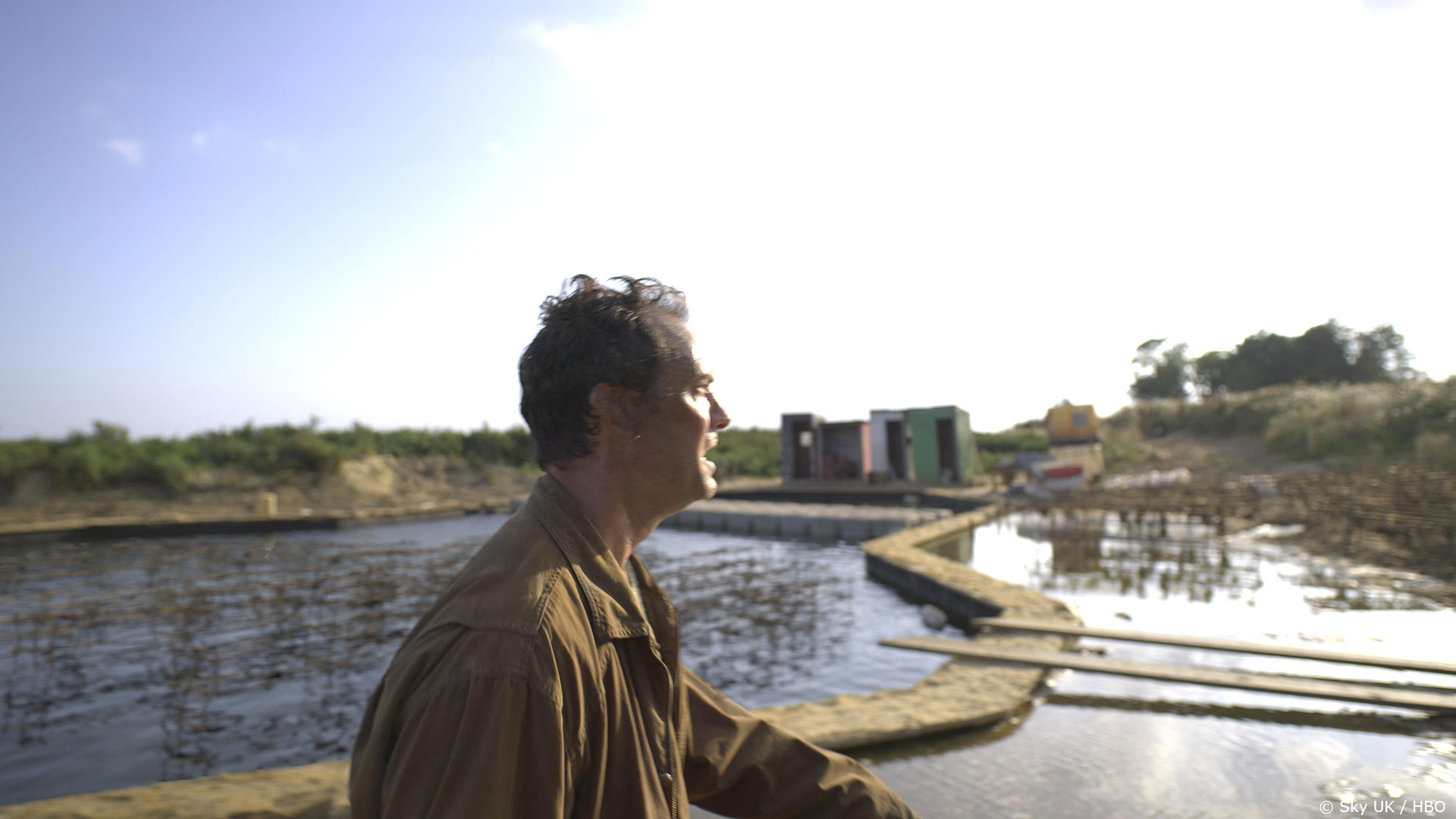
Is there something specific that gives you some really short nights?
The schedule and Covid. Things got very stressful around March.
What is your favorite shot or sequence?
One of my favourite shots on the show was what was dubbed the flying shot, where Mrs Martin leads Sam away from the revelers. Sam seemingly floats up above the village square. This was actually achieved in camera, with Jude walking onto a platform mounted on a crane along with the camera operator. We then added all these characters floating up into the air, or dancing on the roof tops, which we filmed as a separate element shoot with wires. It’s a great shot- and achieved quite simply in a sense.
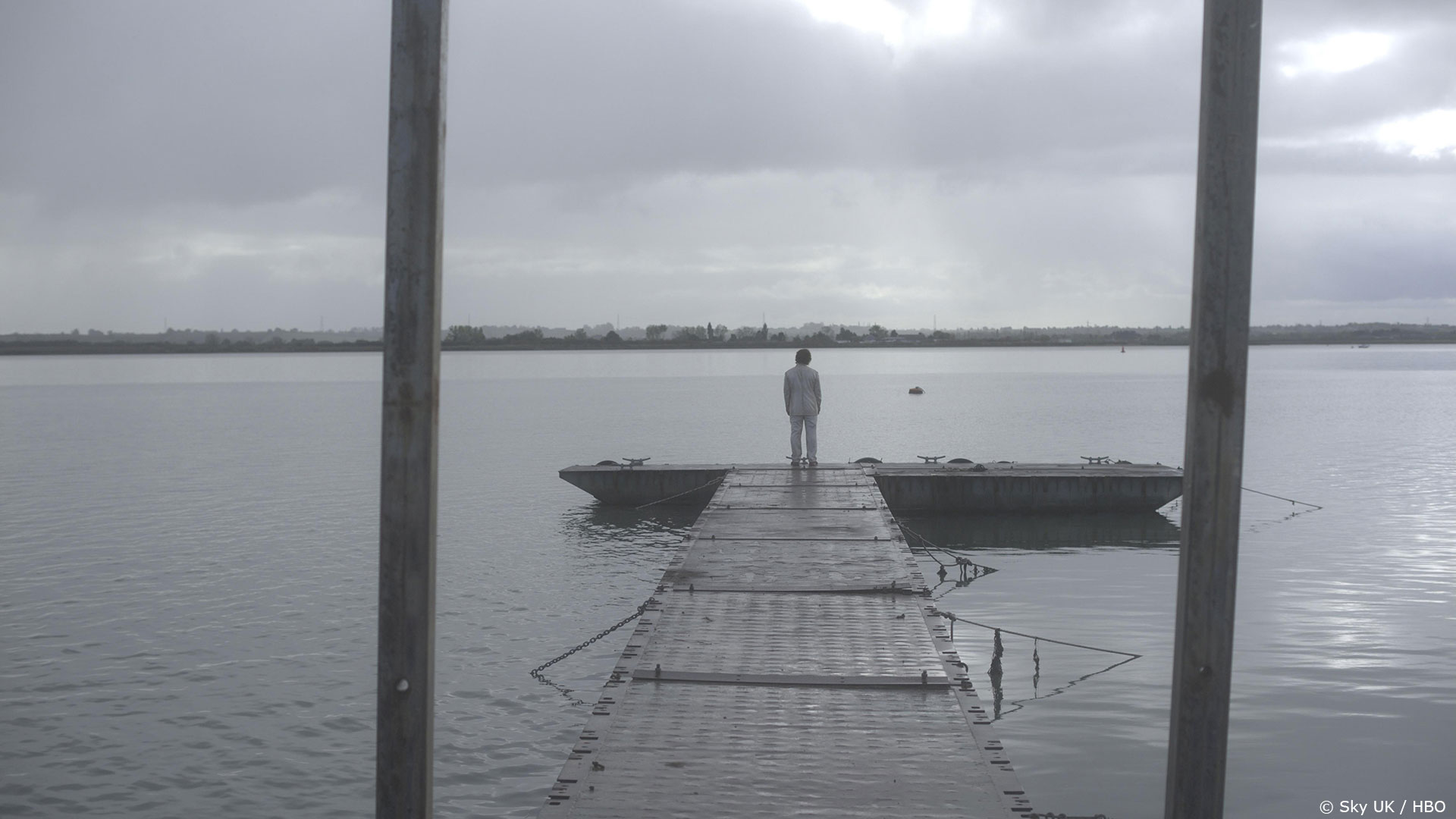

What is your best memory on this show?
Being beside the sea- of course, especially being out in the middle of the causeway!
How long have you worked on this show?
14 months.
What’s the VFX shots count?
520 shots.
What is your next project?
Currently working on PENNYWORTH and MCDONALD & DODDS.
What are the four movies that gave you the passion for cinema?
That’s much too hard a question. But what I would say is that when I was younger I lived near this independent cinema, which had programs of art house films and foreign films, which was a great introduction to the world of film.
A big thanks for your time.
WANT TO KNOW MORE?
Freefolk: Dedicated page about THE THIRD DAY on Freefolk website.
© Vincent Frei – The Art of VFX – 2020
Don’t miss this trailer for the animated Netflix series, THE LIBERATOR, that take us to war with a beautiful visual treatment:
The Animation and VFX are made by:
Juice
Director: Grzegorz Jonkajtys
Release Date: November 11, 2020 (Netflix)
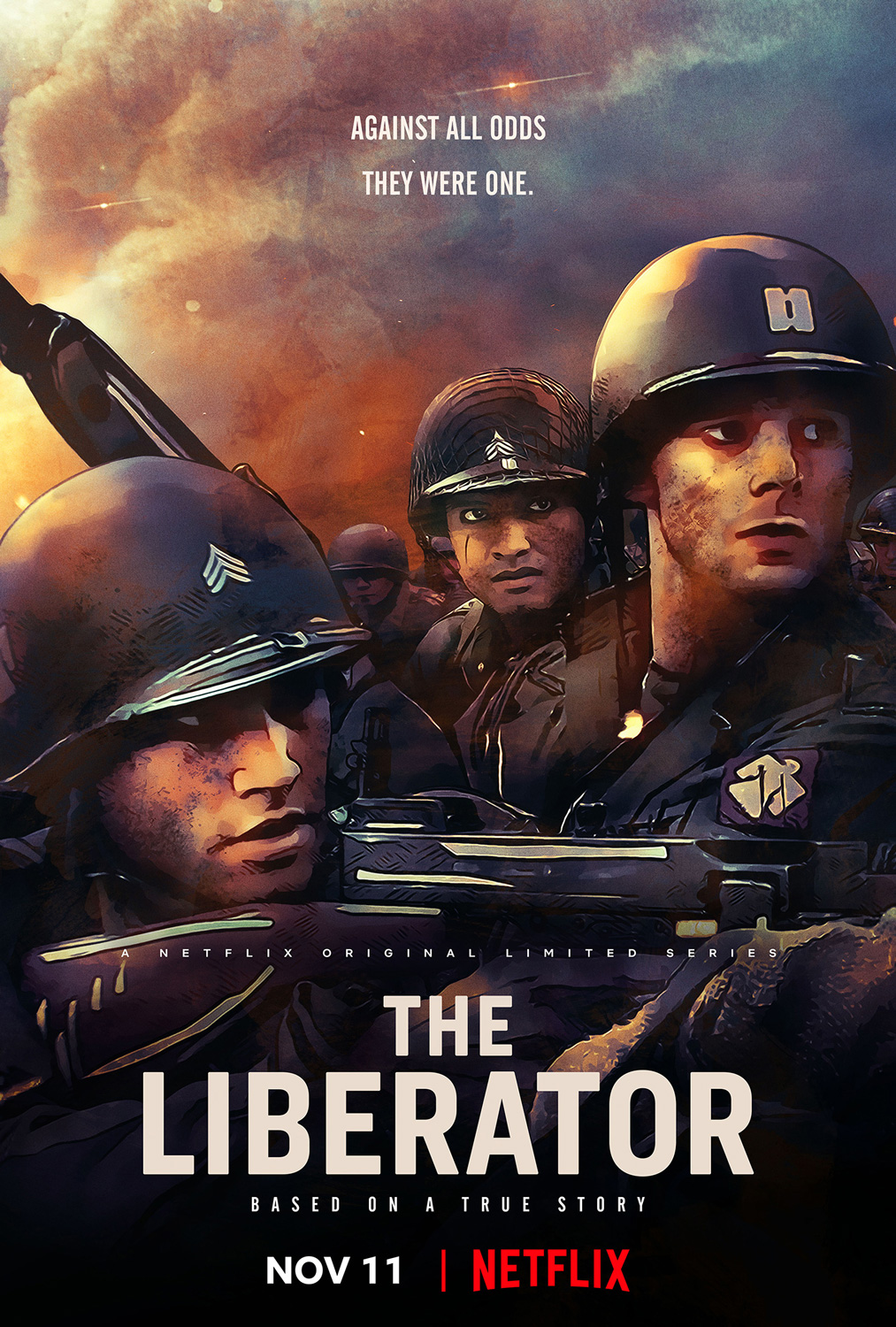
© Vincent Frei – The Art of VFX – 2020
If you like robots and the the beautiful paintings of Simon Stålenhag, then don’t miss this new breakdown video by Rodeo FX about their work on TALES FROM THE LOOP:
WANT TO KNOW MORE?
Rodeo FX: Dedicated page about TALES FROM THE LOOP on Rodeo FX website.
© Vincent Frei – The Art of VFX – 2020
Come have a look at the magical work of Spin VFX on the Disney Channel Original Movie, UPSIDE-DOWN MAGIC:
WANT TO KNOW MORE?
Spin VFX: Dedicated page about UPSIDE-DOWN MAGIC on Spin VFX website.
© Vincent Frei – The Art of VFX – 2020
Wayne England has been working in visual effects for over 25 years. He has worked on projects such as 2012, CASTLE ROCK, AMERICAN HORROR STORY and WATCHMEN.
What is your background?
I was a music composition major in college, and when I started visualizing music in ways that could only be created through CGI, I found myself at Cal Arts embarking on a dual masters in Music Composition and Experimental Animation. Jumping ahead, VFX has taken the lead role in my career, from CG artist to FX artist, to directing commercials, directing a 4-D theme park ride in China, to VFX supervising features and large scale episodics such as HBO’s WATCHMEN and Amazon’s UTOPIA.
How did you and FuseFX get involved on this show?
FuseFX CEO David Antenau had connected with me while I was finishing up WATCHMEN and after learning the vision of the company with Dave, Jim Rygeil and the core team at FuseFX, aligning made great sense. FuseFX had already been involved from the outset with the on-set supervision for UTOPIA, so I initially came on board as post VFX supervisor for the show while shooting in Chicago was approaching its final stages.
How was the collaboration with the Showrunners and the directors?
Coming onto the show close to the end of shooting, I didn’t cross paths with the director, but met a number of times with showrunner Gillian Flynn and producer Jessica Rhodes. We met for the VFX blocking sessions, where we creatively defined and confirmed together the vision for VFX shots across various episodes.
As a fan of Gillian’s work, it was inspiring to exchange with her and be entrusted to realize her vision for many of the more epic and climatic moments of the show. Inspiration is always wind in your own sails and for me this specifically translated into going very deep into the details of the world and beginning to source references for our VFX. My personal aim was for our visual effects to express some inspiration back in the direction of Gillian.
What were their expectations and approach for the visual effects?
Though we didn’t literally define expectations, I know we shared the same vision: the absolute highest standards of photorealistic integration of effectively expressive visual effects. A lot of things are required to realize that aim, but at the outset it was much about delving very deeply into the story and gaining a sensibility toward all the creative choices made to cumulatively render the tone and feel of the show. With that, a level of discernment can arise that aligns choices in good directions. For exceptional supporting VFX, seamless integration is half the target, while the other is a perception into how the VFX can express a nuanced quality that enhances the story’s highest aspirations.
With that said, Huey Park and Nick Fuentes come to mind, as UTOPIA’s post producing duo. From start to finish, it was a genuine pleasure to collaborate with these two gentlemen.
How did you organize the work with your VFX Producer?
Our UTOPIA VFX producer was Gary Romey, who played such an invaluable role in so many ways, (including his unfailing positivity and good vibes). I was initially quite taken aback at how fast and fluid his ability was to access literally any data point of the show. What I quickly learned was he’d long been using Fuse’s powerful in-house shot and database management software: “Nucleus.” Nucleus is the organizational template into which all FuseFX shows grow and evolve. From bidding to shot tracking, it’s at the heart of how the studio shares data and interfaces with individuals, teams, and departments with a show’s evolving content. Nucleus leaves us the space to focus on the creative, and for great synergies within the team to form. This was especially true for our VFX editor Tyler Base and coordinator Nicholas deGrazia, who facilitated our review screenings with expertise throughout the season.
What are the advantages to also being the 2nd Unit Director?
A scheduled “elements shoot day” calling for the lighting and shooting of specific missing components of shots across all episodes, meant we’d be integrating this additional content as VFX elements into existing footage. Most important was getting the exact angles and lighting we needed, especially given a series of “adventurous” hand held shots featuring a sprawling CG factory interior, into which we’d be integrating many live action factory workers. Given the overall needs of the shoot, I flew to Chicago and 2nd unit directed the elements shoot day, which ended up being one of my peak experiences for the entire season. Of course, pre-planning was key, and in working with executive producer Robin Sweet and the Chicago based production team, we established a solid plan. For this kind of shoot, it was essential for me to have live compositing from video playback, to align our live content with existing plates and previsuals. Our local on-set vfx sup. Mark Anderson, played a very helpful role in assisting with some of the local preparatory details. Come the morning of the shoot, I distributed the shoot schedule and plans I’d written up to production, and along with Mark, the second unit crew, and about 30 extras, we had a wonderfully effective and enjoyable day of shooting. Most importantly, we acquired everything we needed.
The series is really gore. How did you enhance this aspect?
I felt I had some good perspective for the gore shots with my background as a fluids FX specialist. Along with some experience supervising a couple of other recent shows with gore themes, I knew what was important was to strike a balance between hyperrealism and “theatrical effect.” Not surprisingly, realism took the more supporting role with the blood FX amounts, sizes, and distances traveled, most often enhanced for desired dramatic effect. We made creative use of both our 2-D blood elements content library and 3-D fluids simulations for very specific actions.
A side note to share with gore FX: When crafting a shot with lighting and compositional balance, you’re going to recognize some of the gore shots you’re working on, as ironically beautiful. We’re deeply wired to recognize beauty in fluid dynamics and are highly sensitive to its realism (give or take a few million years of evolution). This is also to acknowledge just how impactful a gore shot is when well-executed, and how inversely impactful it is when it’s not quite hitting the mark.
Can you elaborate about your work on the missing eye of Wilson?
There was a good amount of research identifying realistic types of interior eye socket structures suitable for our purposes. On top of that, we needed to factor swelling associated with the eyeball having been just ripped out with a spoon no less. Research also confirmed how the muscle memory of an eyelid stays in place after an eyeball has been freshly removed. Combining key aspects from three specific image references, our initial, fully illuminated 3-D renderings were actually incredible in their detailed realism. It seemed everyone who saw the renders made an unintended noise at first glance! The first sequence to integrate into was the bunker room, and though we didn’t see as much detail given the relatively low light and LUT, the dimensionality and realism still translated well with subtle highlights and shadowing. All in all there were just under 80 eye socket shots, and we split these up into close range 3-D hero renderings and a 2.5-D solution, which drew upon an array of rendered perspectives of the 3-D eye socket. From this “library” of renderings and associated AOVs, our comp team could very effectively derive the correct perspective and appearance for the medium to far distance eye socket shots.
How did you enhance the various environments?
For the variety of set extensions, each was a variant of CG, matte painting, and compositing, with the most extended sequences being the warehouse storage collapse and the “hot zone” (tent village). Each of these sequences had both wide angles and nearby extensions, requiring high degrees of visual detail and simulated motion. For the warehouse collapse, that level of detail was highest due to close ups of CG storage boxes being ripped open and glass vials pouring out, prior to the larger simulated collapse of all shelves and boxes. For the tent village, variations on cloth simulations for tent fabric matched live action tent cloth dynamics. In wider shots we saw over 150 tents and associated details of the pandemic emergency makeshift hospital.
Which location was the most complicated to extend?
For me personally it was the sprawling, detailed interior of the “Simpro” factory, in part because of the variety and number of live action elements to shoot and integrate into the CG set extension. Another aspect was that a significant part of the layout and plausible functionality of the factory floor (where extras were engaging in various activities), needed to be very specifically defined. This became a component of my pre-shoot responsibility and planning. The CG build of course also needed to look 100% photorealistic and required a good deal of detailed specification beyond the sketchup renderings that had been provided to us.
Can you tell us more about the FX work, especially the fire?
We had several instances of fire across the episodes, but what stands out are the simulations of the farm house’s explosion and its burning aftermath. We were fortunate to have Wayne Hollingsworth as our FX supervisor, who made sure we arrived at extremely impressive simulations that were very close expansions upon the pyrotechnic themes established in camera from special effects. More specifically, a practical fireball did explode out of one of the front windows of the farm house, which had a lot of excellent qualities to draw from, including a dynamic rolling action as it rose and transitioned into smoke. We realized our aim in replicating the realism within those generalized dynamics, but increased the size of the fireball to expand out of both the lower windows. We did the same with the simulated fire FX rising from all windows in matching the dynamics of the one with practically lit windows.
How did you create and animate the crowd?
Some of the “hot zone” (tent city) shots involved well over 100 hazmat clad digi doubles. For all the day and night time shots they were lit and positioned by our 3-D team, while they were set in motion using our Xsens motion capture solution, which provided us the ability to capture all the performance variations and unique interactions we needed. This was a very seamless process in large part thanks to David Bloomenfeld, the head of 3-D and in so many ways is responsible for the effectiveness and efficiency of FuseFX’s CG pipeline.
What was your approach for the clones?
With correctly shot plates in hand for the twin clones inside the hot zone tents, it was a relatively direct process of combining the plates in comp. With some alignment adjustments and roto clean up, our compositing supervisor Heather McAuliff applied the precise refinements needed for all aspects of the plates to work in unison.
Which sequence or shot was the most challenging?
Episode 8’s climactic collapse of the warehouse qualifies as the most challenging sequence. Fundamentally this was due to the warehouse’s huge scale, the close up CG interactive shots with the live action hero’s, and the extreme degrees of precision required for simulation timings and close up realism, in addition to close up and wide angle shading and lighting requirements to match perfectly with all remaining live action components of the shots. The event itself involved a forklift impaling one of the shelving units in a specific way so as to trigger a domino effect, sequentially causing the collapse of every shelving system in the entire warehouse. The key was how we represented the specific causal sequence of physical events for each shelf system that moved into action. This was fundamentally a two step process: first establishing essential motion and timings in animation, then passing those motions to FX for integrating the simulation of physics collisions and deformations. In animation, we needed to see the weight of one shelving system pulling upon the structural integrity of the next, unhinging specific horizontal support beams, triggering the weight of the entire shelf to drop down and lean inward, then from the redistribution of weight, pull upon the next in row shelf system for the pattern to repeat. Once we had realized this specific sequence in motion in context with the timing of live action events, it was passed on to FX for simulation testing. With some back and forth refinements, we were able to arrive at a system in Houdini that enabled advanced degrees of creative control. The degree of realism our team was able to achieve with both closeup integrations with Rain Wilson’s character and the sequential collapse of the entire warehouse in the wide shots is quite exceptional.
Is there something specific that gave you some really short nights?
For this question, happy to simply say “no.”
What is your favorite shot or sequence?
It’s a toss of a coin between the warehouse collapse and the Simpro interior factory sequences. The warehouse collapse, because of the effectiveness of the specific approach we applied for the resulting collapse to feel so natural, and the extremely high-level execution and artistry of our CG, FX, and Comp teams. That said, I was most personally attached to the Simpro interior factory shots in large part because of the shoot day in Chicago and directing the live action elements to integrate, plus the layers of my involvement in the composition, functioning appearance, and realism of the factory.
What is your best memory on this show?
I could say a few things but the truth is, it was the day-to-day experience with the people involved in this project. We had a good process and a great team collectively.
For example, our comp supervisor Heather McAuliff and CG supervisor Christian Gonzales showed up each day with such high levels of professionalism and enthusiasm.
As a group, it felt like we were always reaching for our best in the quality of our experience together, in addition to realizing a next-level quality in our work. If as a team, we can enrich each other in the process, the work has a better chance of being more inspired. We did learn that Gillian was actually blown away with our work (especially the warehouse destruction sequence). For me that translated as inspiration shared. Go Team!
How long were you on this show?
I first engaged UTOPIA in September 2019. FuseFX wrapped the final finishing touches to season one in July this year.
What’s the VFX shots count?
The FuseFX shot count (the bulk of the larger/significant VFX shots of the season): 345
What was the size of your team?
Approximately:
12 comp
8 CG
4 FX
4 matte painting
3 vfx editors
3 vfx coordinators
3 I/O
What is your next project?
I’m currently involved in VFX supervising parts of a Marvel/Disney+ project as well as VFX supervising a Netflix feature film. I’m also enjoying soaking up UE4 (and Niagara) on the side.
What are the four movies that gave you the passion for cinema?
As a boy living in Hertfordshire, England, my father took my brother and me to see a cinematic rerun of 2001: A SPACE ODYSSEY. As an 8-year-old, I felt utterly transported into a future world. The same was also true (yet so much more) when I saw STAR WARS. Coming out of the theatre, I literally had the sensation I’d just been to another galaxy and was absolutely thrilled. Foundationally, these two films were all about the sensation and experience of being transported – and I can say these early films rooted in me a fascination and love for the power and possibilities of cinematic immersion.
The remaining two films deepened my love for the art and power of cinematic story, and both hail from the historic 1999 year of films. Of course, the original masterpiece: THE MATRIX. Everything about this work of cinematic art was visionary, including the profound levels of philosophical symbolism of awakening into actual real questions, leading to unlimited human possibility. Spectacular! The other masterpiece: AMERICAN BEAUTY – another story of awakening and transcendence in championing a fearless sense of wonder in Ricky Fitts, and with that, imbuing within him intelligence enough to see the profoundly beautiful in everyday things, including his filmed plastic bag blowing in the wind. Inspired!
A big thanks for your time.
UTOPIA – VFX BREAKDOWN – FUSEFX
WANT TO KNOW MORE?
FuseFX: Official website of FuseFX.
© Vincent Frei – The Art of VFX – 2020
Let’s have a look at the invisible work supervised by John Mangia and made by Chicken Bone FX on the Netflix series, THE QUEEN’S GAMBIT:
© Vincent Frei – The Art of VFX – 2020
Last year Stephan Fleet explained to us in detail his work on the first season of THE BOYS. He is back today to tell us about the new season and its challenges.
What was your feeling to be back for this new season?
I was really pumped. I knew I was coming back to some crazy, even bigger opportunities than season 1. Also really excited to work with my friends in Toronto and my really great VFX staff (both in LA and Toronto). I also knew I had a whale to kill, so there’s that!
How was this new collaboration with Showrunner Eric Kripke and the various directors?
It’s always great working with Eric. Our relationship has grown over the years to a point where we get each others sensibilities. Coming in to season 2 it felt like I had earned his trust. He gives me a lot of creative voice on the project, which is just awesome. We also managed to get half of the VFX done during COVID, remotely, which was unique but also worked quite well.
As for directors. I love them and aspire to direct myself. So I feel like I always have a lot in common with them. The challenge with a TV style project is that we have up to 8 unique directors coming in and out at different times, so you have to build a connection very fast. Every director is different, so your social approach changes. It can feel very jarring at times. But that’s more of an institutional, structural issue. The director’s on The Boys have all been super rad!
What are the main changes that you did from the first season?
Bigger staff in post. We double our coordinators and VFX editors. We shuffled some vendors around and had less vendors overall, but with a bit more time… and then a LOT more time due to COVID, lol.
I think emotionally, I had grown as well. Having gone through a season already, I knew more of what to expect. Not just in production, but also in post. So I think I was able to steer production to dodge issues in post that we had during season 1. I also panicked a little less. But don’t worry, I still panicked 😉
How did you organize the work with your VFX Producer?
I always consider the VFX Producer a true partner. That’s the way it has to be. For season 2, Shalena Oxley-Butler was VFX Producer and we got along really well. We have certain complimentary skills (I’m more an introvert, she is an extrovert) that we would employ wisely.
On a technical level, she handled all the finances for the show, while I was in charge of creative. Since I was in Toronto for all of production, and she remained in LA, she was in charge of the LA office, coordinators, and VFX editors as well. While I had an assistant and my full time, On-Set Supervisor Rian McNamara up north. We would also bring in some swing data wranglers from time to time from various local vendors.
To be honest, lines blur a lot and mostly Shalena and I were a pair that just did a lot of problem solving together about how to get the show done in the best possible ways.
This new season brings a new character, Stormfront. Can you explain in detail about your work on her?
Sure, Rising Sun Pictures, in Australia, handled all of her powers from beginning to end. We started very early with some concept work because we knew we needed something to show the actress and cast and crew, so gestures and stunts and such could be built around her powers. Even the scripts changed over time to match the powers we creative. Specifically, the fact that she can not only electrocute someone, but that she can grab them with her « plasma » and throw them. That became kind of a signature move that was built off of a very specific previs Rising Sun Made.
Can you tell us more about the lightning creation and animations?
It actually changed a lot from production to post. The previs I mentioned up above had a more lasso-y feel to it, smoother curves. In post, we did a ton of research on Tesla plasma. Though I know everyone says « lightning » technically we went off of the look of charged plasma in a Tesla ball (you know those things you could get in the 80s at Spencer’s gifts, and put your hands on!).
We also looked at a lot of slow motion lightning examples, and even some crazy Tesla guns people have made online, we really looked at not just the properties of the plasma itself, but the way it interacts with the camera lens and on various objects. That led us to add a little bit of secondary sparking at times, and, my favorite, this little flare out in the camera lens when she turns off her powers.
How did you improve the way you create the powers of the Seven especially Homelander and Starlight?
I’m not sure if we did much improvement here. We spent a lot of time researching and developing these looks in season 1, and the idea was why mess with a good thing? We did find new and interesting ways for them to use their powers. But technically I think they are pretty on par!
Did you use procedural tools for the eye laser effects of Homelander?
You would have to check with the various vendors that have done his eye effect. For season 2 I would talk to Rocket Science VFX and/or Soho VFX.
In a sequence, Deep is using a whale and sharks to stop the Boys. How did you create those animals and especially the whale?
Oh man I just love talking about this scene. Isn’t it just the most absurd thing ever? It started with the production designer, Arv Greywall, and his team hard at work building the practical set. It was both an exterior on the beach and an interior « gut » location, with some animatronic movement to the tail and jaw as well. Meanwhile, VFX piggybacked off of the « practical » whale set designs to start building assets and previs.
We managed to get our good friends at The Third Floor to work with the director of that episode, Steve Boyum on a complete and flushed out previs of the whole sequence. That previs became kind of the bible for how to film the scene and finish it up in post. The entire scene has only one blue screen element, which is the piece of The Deep composited on top of the whale for his big introductory shot. The rest is a blend of all real plates filmed from a helicopter or boat and heavy CG work.
We knew it was one of our biggest sequences to date so we turned to ILM London to do that whole sequence, including the shark fins. From there, it was a very procedural several months of reviewing animation passes, model and texture passes, lighting etc… I’m sure ILM has the more nitty gritty details about how exactly they went about designing the sequence… from my end, it all went very smoothly – thanks, I think, to having a really strong up front vision.
Can you tell us more about the terrible death of the whale?
Terribly hilarious, maybe! 🙂
Yeah, this was our blend point from CG whale to real whale, right when the boat hits and everything gets all close and crazy. We did add some enhanced CG organs and blood, however a lot of what you see flying at the cast is real and shot from blood and guts cannons. I also got to learn what real whale guts look like, that’s another thing I can add to my resume.
Seriously though, we had that previs, and we went back and forth about logistics. How far out does the whale have to be to get beached, what would realistically happen if a speed boat hit it. The answers were all – this would never really happen, the boat would shatter, etc… but as we started animating the previs, the concept of that great slid once the boat came to be, and it looked great and it « felt » real in the moment… so that’s how we crafted this insane sequence that’s definitely more Romance than Reality.
The season is full of exploding heads. What kind of references and influences did you receive?
So what really happened here is – yes, we did the usual thing and looked up tons of explosion reference online. We also had our good friends in Special Effects do a practical explosion in the first episode as reference…. but really, we spent a lot of time with Rocket Science on that first head explosion. Our business plan was to really spend the time and nail it on that first one, keeping all of the R&D handy, knowing there was quite a bit more of it coming down the pipe.
It became a lot of trial and error, trying different things out. More chunky, less chunky. Rocket Science developed this genius, comedic arterial squirt that comes out of the neck after the explosion, and so on.
Once the later episode hit, our investment payed off. We knew what we wanted and Rocket Science crushed it. A lot of morbid laughter during reviews!
Can you elaborates about the creation of this gory effect?
If you look closely, there are a few hero elements. It starts 1 to 2 frames of the face being broken through, then you get this medium velocity blood spray, with some gloppy chunks built in. dialing in the volume via specularity was always a thing, it worked better in some angles than others. Also, having a sub-surface scattering, semi-translucent back light kinda feel to the blood really worked if it flew up in front of a bright object.
After that, we have the neck that remains with what we called a « meat necklace. » We put a lot of time in to really seeing that flappy ripped up inside of the face and head. Then you get the blood drips down the body and that arterial squirt we love so much out of the neck.
We kinda took all these elements and, like any good VFX shot, composed them to the tempo of each moment. In this sense, VFX is a lot like music, there is a cadence and a tempo to how fast and slow things happen. The rate at which the body falls after, when to cut out of the shot, etc.
I also, personally, prevised the crap out of that courtroom scene. What felt great about that one is that the director and I really were able to collaborate in production and get a lot of great looking, pre-designed stuff. There was also plenty of room for improv however. One of my favorite, on the fly supervising moments was this shot of someone running away from camera whose head explodes in the FG. We shot it hand held and got some really quick camera tiling afterwards. It was one of those things, earlier in my career, that would have worried me… but I was able to take a look at some recorded rehearsals and with a few minor adjustments, make a very shoot-from-the-hip style shot very doable in VFX. I think the shot came out great and has that earthy, « grounded » vibe we all wanted. Everyone wants grounded these days. Heh.
How did you work with the makeup and SFX teams for this effect?
The Kenny Family, Tony and his sons JR and Hudson, do all the SPFX for the show – and they rock. I mean, when they say they are gonna blow something up. They blow it up. We have a very health working relationship together, often sharing notes and concepts. Since the show really is about trying to keep things ‘real’ we rely on SPFX a lot!
Even the very last day of production, we had a bit of a set emergency where we needed to craft a fake puppet head for Homelander to grab on to. We went in to their shop and dug around and after about an hour we had built something together as a team. And that’s the way it should me.
Make Up Fx is one of the hardest roles on this show. It also has me on the edge of my seat. A lot of the human gory-effects are attempted practically. And basically, the more it works out on set, he better for VFX. If it doesn’t work… well… post production time, baby! Therefore, it was in my best interest to work closely with Make Up Effects as well.
During a fight with Stormfront, a whole pack of building are destroyed. How did you handle those destructions?
This was all the work of Rising Sun Pictures. Much of the stuff inside the building was enhancement of practical debris that stunt people crashed through. Also a lot of false walls for supes to smash each other in to. Often it was a mixture of making the real stuff feel a little more solid and then adding some more CG on top.
We had prevised that big shot climbing up the building, and then RSP did this wonderful post-vis that got us the timing we needed for editorial. From there it was a lot of procedural iterations to get all the components to not only look photo-real, but tell the story of what’s going on as we ascend the building.
How did you enhance the Seven Tower model and the city environment?
A few vendors tackled the 7 Tower in season 2. Primarily Ollin VFX and Rising Sun Pictures. We had a pretty good idea of what we wanted coming out of season 1. We found that we really like inserting it in to aerial footage of NYC. In fact, as post went on and on for season 2, what Eric and I realized is that some of the best effects for this show are the « throwaway » effects. That is, something in VFX that adds to a frame, but doesn’t really call attention to itself. So expect more of that in the future!
Can you tell us more about the crowd creation and animations?
In season 1 Rocket Science VFX in Toronto stepped in and did the crowds for the Believe Festival. They did an amazing job. So we had them come back and rock out the crowds in season 2. We knew there was at least one challenging scene that would require a lot of digital doubles, so we started that early.
Our rule of thumb on the show is that if we are in a medium to close shot, it has to be real people. If it’s really far way, we find clever ways to make digi-doubles work.
The concept of crowds is really important to the world of THE BOYS. We do a lot more practical crowd work than others do these days. I’m that guy always fighting to hire more background talent! I don’t know, I just feel like doing crowd duplication really constricts your camera movement and forces you in to green screen scenarios that I am not a fan of. Kind of like driving comps, I can always tell. So I’m pretty against excessive crowd replication.
Where was filmed the various parts of the series?
The show is filmed entirely in and around Toronto, Canada.
Did you bring new vendors on this season?
Yes! Rising Sun Pictures, ILM, and Ollin were new this season!
How did you split the work amongst these vendors?
The best answer is that we split it out on a case by case basis, always keeping in mind what challenges shuffling things around will pose to our vendors.
Can you tell us more about your collaboration with their VFX Supervisors?
I mean, the vendor VFX Supervisors are really the keys to all the doors of a project. Without their creative input and leadership, everything would fall flat. I do my best to come up with clear visions of what we want… but to be honest, that doesn’t always happen. I’d say 50% of the time it’s an exploration, and I need a strong creative partner for that exploration. Also, while I’m busy focused on 1000 things delivering at the same time, the idea of breaking something up is to give facilities smaller chunks to focus on and ultimately make better..
Just like, well, about any relationship in life – sometimes things just work great. But most of the time communicating is hard work. It’s something I’m very reflective about. I’m constantly on the search for how I can communicate better.
That being said, all the VFX supes I worked with on S2 were super cool and brought a lot to the table. I recently looked at IMDb and realized there were 330 VFX credits alone! That should give you some idea of just how many people are integral in making this show a reality. And just how many people all the vendor-side supes are responsible for creatively leading. It’s amazing and humbling.
Which sequence or shot was the most challenging?
Can I just say all of episode 206? hah!
Seriously, the challenge with that episode, and I knew it from the start, is that it is all unique IP. By that I mean it had a bunch of unique super heroes with unique talents… but that you only see one or two times. So we had to R&D and come up with a season’s worth of powers and gags for just one episode.
On a side note, I 2nd Unit directed all of the supes you see in the monitors. It was all filmed in real cells in an abandoned psych institute, so that was super creepy and cool
Did you want to reveal any other invisible effects?
Haha, a magician never shows you their tricks 🙂 But let’s just say Jack Quaid isn’t actually real, he’s an AI we made in a computer.
Also superhero capes are a big thing. Whenever they fly, they need to be rigged on wired harnesses, and the capes get in the way. So if you ever see someone like Homelander or Stormfront hovering, their cape is CG.
Also a lot of CG blood and wounds. A lot.
What is your favorite shot or sequence?
That’s a tough one this season. The Whale is definitely up there. Honestly, I like the whole second half of episode 3, it’s mostly action and VFX for a solid 20 minutes.
Weirdly, I would say one of my favorite shots is in the second episode where Kenji tosses Kimiko in to that building. It was a great example of a real to CG blend that I just felt came off looking really real.
There’s one shot, later on, where Homelander and Stormfront take off from Becca’s back yard with Ryan and we tilt up to follow them. I really liked the tempo of that shot. it’s one of the few times where they don’t just rocket away, we get to see them hanging out up there.. but the CG passed the bar because it was night and a severe up angle.
What is your best memory on this show?
There are a lot of great ones and a lot of great people I’ve worked with and gladly call friends. I think my favorite memory though, was getting to sit in on a cast screening of the first three episodes of season 1. At that time, they had never seen the show with completed VFX… also, no one knew if the show was gonna be a hit or not. So there was a lot of, just, excitement in watching our cast lose their shit watching the show. It was really great.
How long have you worked on this show?
Since the very beginning! Sometime early/mid 2018.
What’s the VFX shots count?
I think we had around 1200 shots in S2. but I will say that the per-shot complexity and size grew by about x3 over S1.
What was the size of your team?
Pretty small. 3 of us in Toronto, 6 in total in LA. Looking to grow that a bit in the future!
What is your next project?
I’m returning for S3 of THE BOYS.
I was bumped to Associate Producer at the end of S2, so excited for the new opportunities ahead!
A big thanks for your time.
WANT TO KNOW MORE?
Rocket Science VFX: Dedicated page about THE BOYS on Rocket Science VFX website.
© Vincent Frei – The Art of VFX – 2020